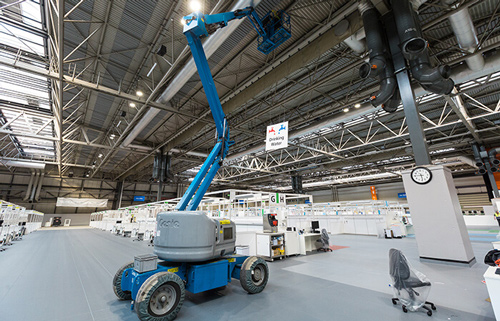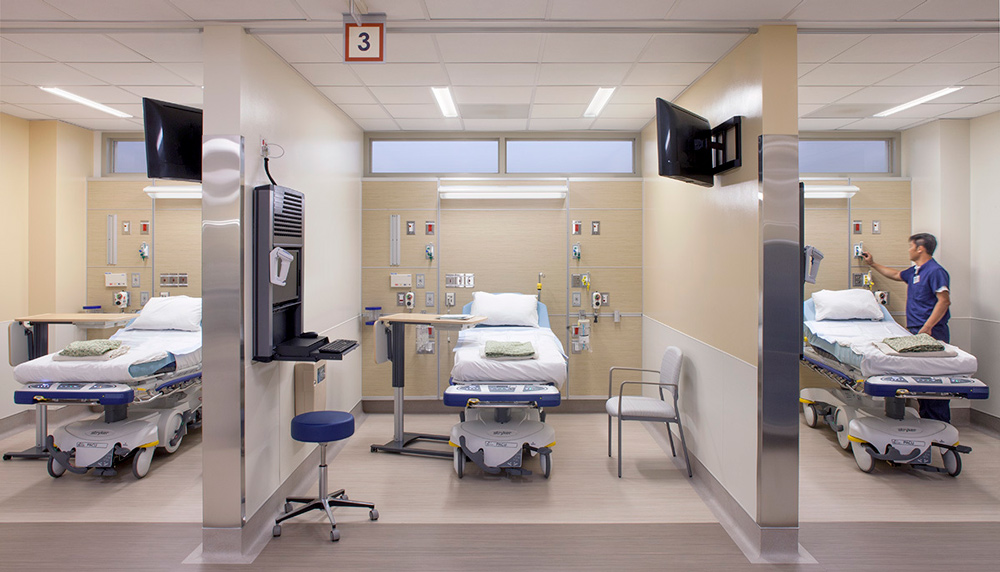Modular Construction: The NHS’ Answer To The Backlog Crisis
 By Richard Coe, Project Director, Kajima Partnerships
By Richard Coe, Project Director, Kajima Partnerships
As the Covid-19 crisis continues, demands on Britain’s National Health Service have reached new heights. Unfortunately there is a growing backlog in elective surgeries and diagnostics, with 2.3 million fewer diagnostic tests for cancer carried out during the national lockdown than over the same period last year. This has possible life and death consequences.
There is, therefore, an urgent need for solutions to expand the NHS’s capacity and give our health service the flexibility it requires to withstand the coming winter months, so that crucial services can continue while we deal with further challenges of Covid-19.
I believe that modular construction or modern methods of construction is one of those solutions. Modular enables fast, quality driven, cost- and time-efficient flexible delivery of buildings. What’s more, NHS Trusts can use modular construction methods to not only flex-up capacity and services now, but also for use post-pandemic.
Safety And Speed
 To appreciate why we need new solutions, it is worth looking at some of the latest health statistics. In particular, the number of patients waiting extensive periods for treatment has grown at an alarming rate due to coronavirus. At present, 50,971 patients have now waited at least a year for treatment, up from 1,117 a year ago.
To appreciate why we need new solutions, it is worth looking at some of the latest health statistics. In particular, the number of patients waiting extensive periods for treatment has grown at an alarming rate due to coronavirus. At present, 50,971 patients have now waited at least a year for treatment, up from 1,117 a year ago.
Modular construction is able to tackle this problem head-on, delivering buildings to the NHS at great speed. Structures are designed and manufactured in factories offsite meaning they benefit not only from quicker build times than traditional methods, but come with greater quality assurance.
We can already see the difference this method of construction is making in the NHS. Indeed, the flagship NHS Nightingale Hospital project added 1700sqm of modular buildings to its estate in just 4 weeks. Several NHS Trusts are also following suit and implementing modular buildings to help bolster capacity. For example, a new respiratory ward was completed, in full compliance with Covid-19 regulations, at New Cross Hospital to support patient treatment, and an 18‑bed ward was delivered in just 5 weeks at Kettering General Hospital. Additionally, the Royal Albert Edward Infirmary in Wigan opened three new modular words in June.
With Patients And The Planet In Mind
But although a quick response is needed, it is important that we do not cause more damage elsewhere. In particular, the NHS is committed to reducing its carbon footprint by 34% this year, so solutions must not come at the cost of sustainability. Thankfully, modular also delivers in this area.
Indeed, most modular structures must comply with the latest L2 Building Regulations on thermal efficiency. This means they deliver on average a lifetime energy saving of 90% when compared to buildings constructed through traditional methods. Offsite manufacturing also adds to this saving taking 67% less energy to produce a modular building.
Another environmental benefit of modular is that project waste is significantly reduced due to the strict quality control resulting in less reworking. The carbon footprint of the build is also reduced by 90% less vehicle traffic than traditional construction methods. Modular buildings can also be reused, repurposed and relocated. For NHS Trusts, this is vitally important; Not only can buildings be delivered under tight deadlines, they can also be repurposed to provide different facilities whenever needed.
Lightening The Financial Load
It is clear that modular construction offers respite from many pressures associated with traditional building methods. Indeed, one of the most notable benefits of modular is the reduction of costs.
Firstly, the modular building process is less labour intensive, quicker, and not as dependant weather conditions due to factory construction. This prevents the incursion of unforeseen costs due to extended deadlines, weather damaged equipment and labour management issues. As a result, modular is up to 35% cheaper than traditional construction.
With NHS resources stretched, this financial relief cannot come at a better time. Leasehold financing options, the improved time and cost efficiency of construction, and the ability to redeploy and repurpose structures, help achieve this. Indeed, modular construction has been able to deliver new relocatable CT scanning units to 15 hospitals across the country this year to help NHS Trusts deal with the backlog of radiology patients.
The Future Is Bright
The positives offered by modular construction extend far beyond tackling the backlog crisis borne from the Covid-19 pandemic. Modular buildings inherently possess the flexibility needed to reduce the temporary load on facilities and services demand during seasonal spikes well into the future.
Perhaps more importantly, the changes in the way we live our daily lives will likely persist for the foreseeable future post-pandemic. We must therefore guarantee that social distancing and care for the wellbeing of our communities is properly considered.
Modular structures, providing high-quality, temporary spaces, built cost-efficiently at pace, are best equipped to deal with these changes. Communities utilising modular will be able to flex-up or -down their space needs in line with any new Covid-related rules and regulations.
For the NHS, employing modular construction methods to help clear the extensive backlog caused by the pandemic is a no brainer. It offers a cost-effective, time-efficient immediate solution, as well as the flexibility to adapt to changing demands and facility requirements.
Ultimately, modular will support the NHS in the short-term and long into the future.


























































